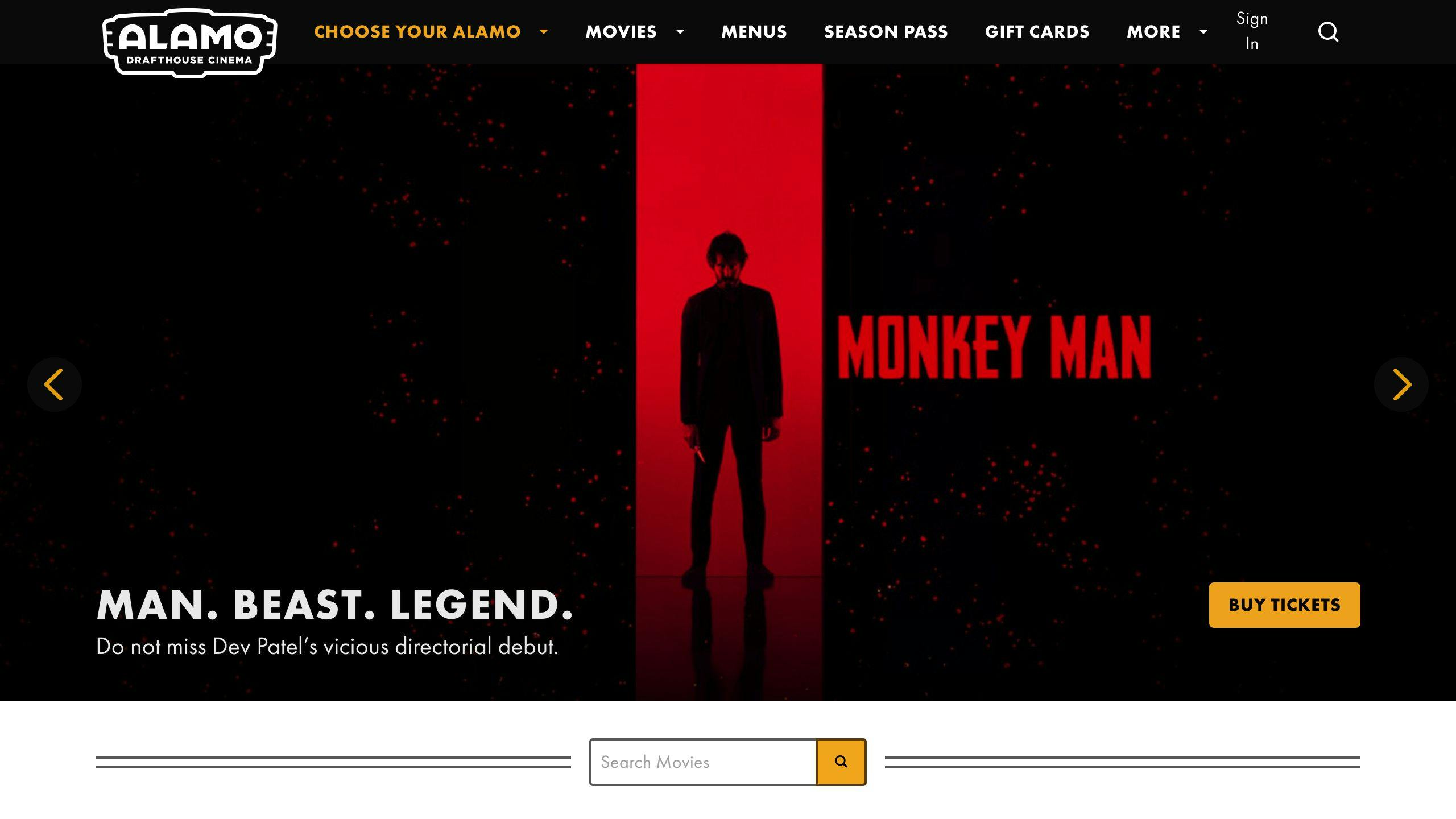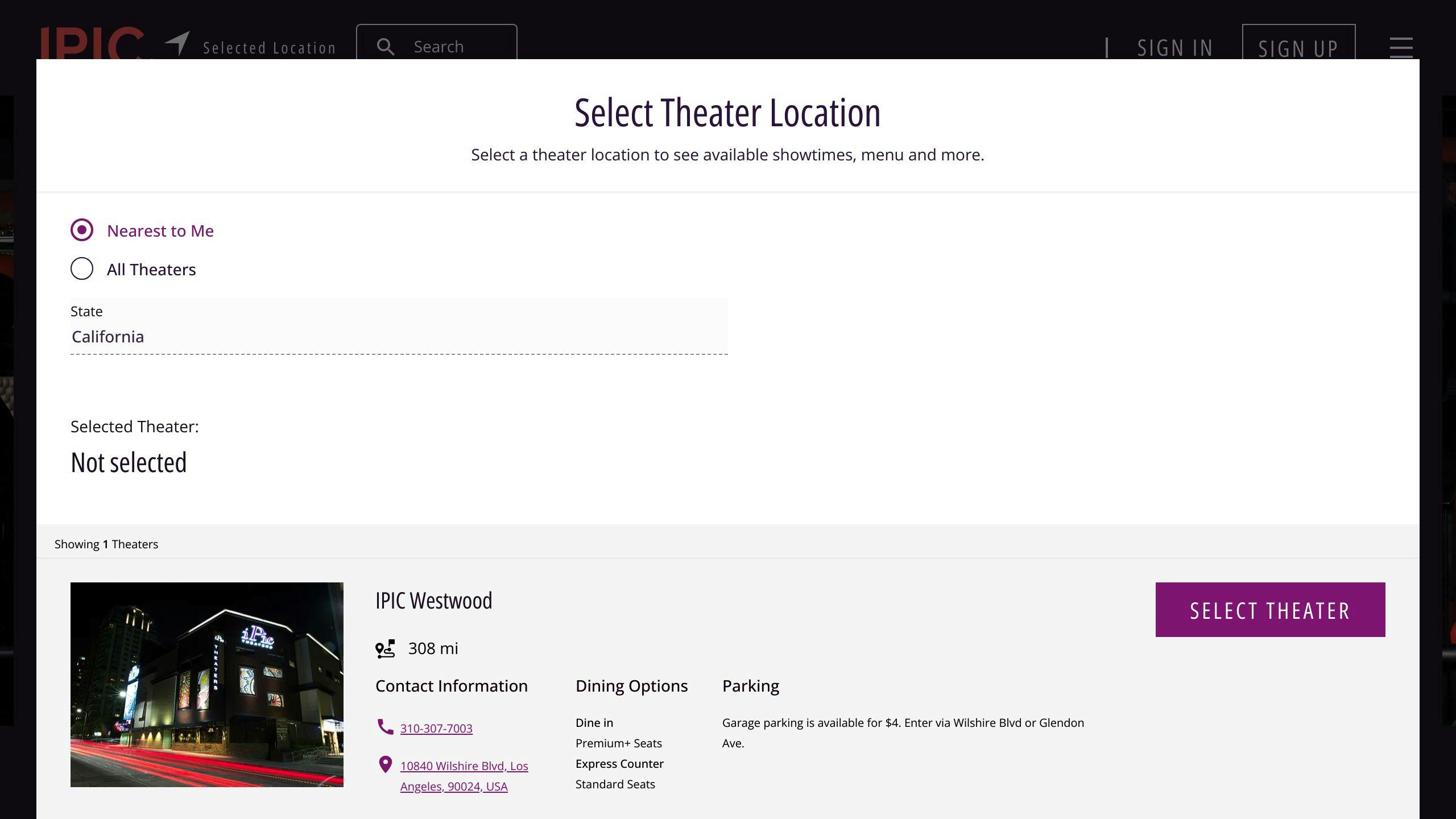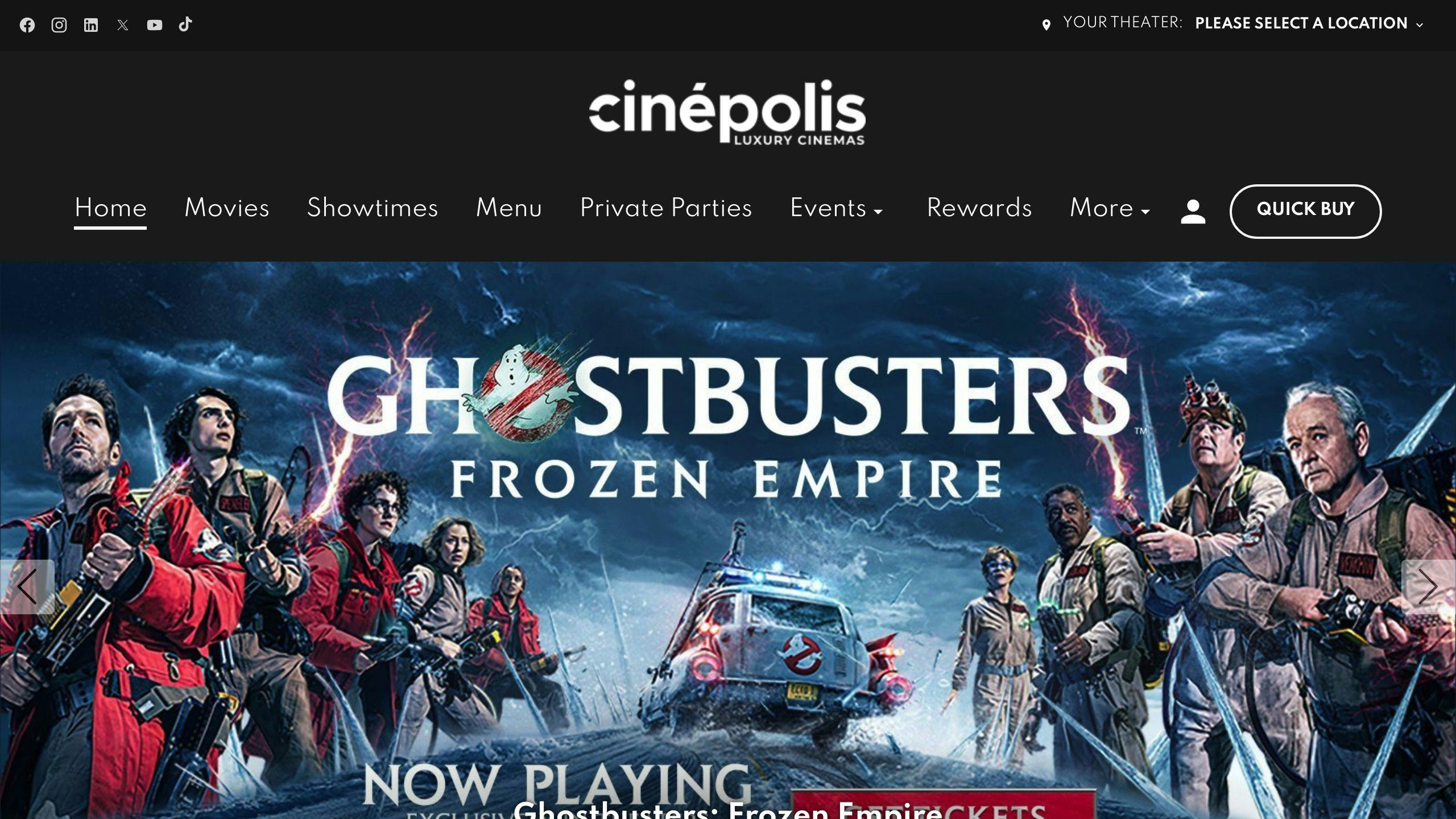Streaming services like Netflix, Amazon Prime, and Disney+ have greatly impacted movie theater attendance in recent years. As more people opt for the convenience and affordability of watching movies at home, theaters are seeing a decline in ticket sales and revenue. This shift in consumer behavior has significant implications for the entire film industry, from production to exhibition.
Key points:
- Streaming offers a convenient and affordable way to watch movies at home
- Movie studios are changing release strategies, sometimes releasing films on streaming and in theaters simultaneously
- Theaters are adapting by offering premium experiences, diverse content, and community events
- The relationship between streaming and theaters is still evolving, and both may find ways to coexist by serving different audience needs
To stay competitive, movie theaters must innovate and provide unique experiences that streaming can't match. By understanding the trends shaping this dynamic and implementing strategic changes, theater owners and managers can navigate this rapidly changing landscape and maintain their relevance in the entertainment industry.
Related video from YouTube
Streaming's Impact on Movie Theaters
Streaming services offer a convenient way to watch movies and shows from home. This has led to a drop in movie theater attendance as more people choose to stream content instead of going out to the theater. Theaters have seen lower ticket sales and revenue, making it harder for them to stay in business.
Movie studios are also changing how they release new movies. Some movies are released on streaming platforms at the same time as in theaters, or shortly after. This "hybrid distribution" model gives viewers more choices but can hurt theater attendance and box office sales.
Adapting to the New Landscape
To stay competitive, movie theaters are trying new strategies. Some are offering more than just movies, like restaurants, bars, and special events. Others are upgrading to better seating and sound systems for a premium viewing experience. Theaters are also exploring different pricing models, like subscription plans or discounted tickets for certain shows.
Movie studios and distributors are also adapting. Some are shortening the "theatrical window" - the time a movie plays only in theaters before streaming release. Others are experimenting with different release patterns, like streaming premieres or limited theatrical runs.
Looking Ahead
The relationship between streaming and movie theaters is still evolving. As viewing habits change, the industry will need to keep adapting. Data analytics and understanding audience preferences will be key for theaters and studios to make smart decisions.
Ultimately, there may be room for both streaming and theaters to coexist, serving different audience segments and needs. But theaters will need to focus on providing a unique, high-quality experience that streaming can't match to stay relevant in this new entertainment landscape.
Streaming Services Are Growing Fast
Streaming services like Netflix, Hulu, and Disney+ have become very popular in recent years. There are a few key reasons why:
| Reason | Explanation |
|---|---|
| Easy to Use | You can watch shows and movies anytime, anywhere, on your phone, TV, or other devices with internet. This convenience makes streaming very appealing for busy people. |
| Affordable | Streaming service subscriptions cost much less per month than cable TV packages or going to the movies regularly. This lower cost makes streaming a budget-friendly option. |
| Lots of Content | Streaming platforms invest in creating original shows and movies for all interests. From dramas to documentaries, there's something for everyone on these services. |
More and more people are choosing streaming over traditional TV or movie theaters. The ability to watch what you want, when you want, at a low cost is driving this major shift in how we consume entertainment.
- In 2020, the global streaming market was worth over $50 billion. Experts predict it will grow to nearly $224 billion by 2028 (Source: Allied Market Research).
- Netflix, the biggest streaming service, had over 203 million paid subscribers worldwide at the end of 2020 (Source: Statista).
The COVID-19 pandemic made streaming even more popular as people stayed home. But this trend will likely continue after the pandemic ends, as people have grown used to the ease and variety of streaming.
As streaming keeps growing, it impacts how many people go to movie theaters. The next sections will look at this effect on cinemas and how the industry is adapting.
Declining Movie Theater Visits
Streaming services like Netflix, Amazon Prime Video, and Disney+ have become very popular in recent years. As more people choose to watch movies and shows through these platforms, movie theaters have seen fewer visitors and ticket sales.
According to data from the National Association of Theatre Owners (NATO), the average number of movie tickets sold per person in the United States has dropped from 4.2 in 2002 to 3.5 in 2019. The total number of tickets sold in the U.S. also decreased from 1.58 billion in 2002 to 1.24 billion in 2019.
| Year | Average Tickets Sold Per Person (U.S.) | Total Tickets Sold (U.S., in billions) |
|---|---|---|
| 2002 | 4.2 | 1.58 |
| 2010 | 4.1 | 1.34 |
| 2015 | 3.8 | 1.32 |
| 2019 | 3.5 | 1.24 |
Source: National Association of Theatre Owners (NATO)
The growth of streaming services and the decline in movie theater attendance are closely linked. As streaming platforms gained subscribers, movie theaters saw a corresponding drop in ticket sales.
- Netflix, the largest streaming service, grew from 21.5 million subscribers in 2011 to over 203 million in 2020.
- During the same period, the total number of movie tickets sold in the U.S. fell from 1.28 billion to 0.24 billion (a decline of over 80%).
The COVID-19 pandemic made the situation worse for movie theaters. In 2020, global box office revenue dropped by more than 70% compared to the previous year, while streaming services saw record growth as people stayed home.
As more people prefer the convenience and affordability of streaming, movie theaters face the challenge of finding ways to attract audiences back to the big screen. The following sections will explore some strategies cinemas are using to remain relevant in the age of streaming.
The Theater Experience
Going to the movies is a special event that you can't get at home. Movie theaters create an exciting atmosphere that makes watching a film more fun and memorable.
Big Screens and Powerful Sound
Movie theaters have huge screens and high-quality sound systems. This gives you a better viewing experience than watching at home on a regular TV. The big picture and booming audio make you feel like you're part of the movie.
Watching with a Crowd
Another great part of going to the movies is seeing a film with other people. Laughing, gasping, and clapping together makes the experience more enjoyable and emotional. Comedies and scary movies are even better when you can react with the audience around you.
A Night Out
Going to the movies feels like a special occasion. Buying tickets, getting snacks, and finding your seats builds excitement before the show even starts. It's a fun night out, unlike just watching something at home.
The Full Experience
While streaming movies at home is convenient, it can't match the full experience of going to a theater:
| At the Movies | Streaming at Home |
|---|---|
| Big screen and powerful sound | Regular TV and speakers |
| Watching with an audience | Watching alone or with a few people |
| A night out and special occasion | Just another night at home |
| No distractions or interruptions | Potential for distractions and multitasking |
Movie theaters offer an immersive, memorable experience you can't get from streaming at home. The big screens, quality sound, crowd reactions, and night out make going to the movies feel special and exciting.
sbb-itb-b1b0647
Strategies for Movie Theaters
With streaming services becoming more popular, movie theaters need to find new ways to attract people. Here are some strategies they can use:
Making the Theater Experience Better
Movie theaters should focus on giving people an experience they can't get at home. This includes:
- Big, high-quality screens and powerful sound systems
- Comfortable seats with lots of legroom
- Tasty food and drink options beyond just popcorn and soda
- Special areas for a more luxurious, VIP experience
By offering a truly immersive and enjoyable viewing environment, theaters can justify higher ticket prices and draw in people looking for a premium movie-watching experience.
Showing Different Types of Movies
To appeal to different audiences, theaters should show a variety of films, such as:
- Big blockbuster movies and popular franchises
- Independent and art-house films
- Foreign language and international movies
- Documentaries and niche genres
Working with independent filmmakers, hosting film festivals, and mixing up the content can help theaters attract movie lovers and build a loyal customer base.
Getting Involved in the Community
Theaters can create a sense of belonging by becoming a hub for their local community. Some ways to do this:
- Hosting special events like Q&As with filmmakers and actors
- Offering workshops and educational programs about filmmaking
- Working with local groups, schools, and charities on events and fundraisers
- Providing a space for local artists to showcase their work
By engaging with their community, theaters can cultivate a dedicated audience and become an important part of the local culture.
Flexible Pricing and Subscriptions
To make going to the movies more affordable and appealing, theaters should look at different pricing options, such as:
| Option | What It Is |
|---|---|
| Dynamic pricing | Changing ticket prices based on demand, time of day, and seat location |
| Loyalty programs | Rewards, discounts, and perks for frequent moviegoers |
| Subscription plans | Unlimited or discounted access to movies for a monthly fee |
| Bundle deals | Combining movie tickets with concessions, merchandise, or other services |
Offering value and incentives for regular customers can encourage more visits and build a loyal audience.
Using Customer Data
Theaters should collect and analyze data on things like ticket sales, concession purchases, and customer demographics. This data can help them:
- Identify popular genres and peak attendance times
- Make better decisions about what movies to show
- Personalize marketing and recommendations for individual customers
- Continuously adjust strategies based on what the data shows
By using data, theaters can better understand what their customers want and deliver experiences that keep people coming back.
In short, movie theaters need to focus on providing a truly special viewing experience, diverse programming, community involvement, flexible pricing, and using customer data. By adapting in these ways, theaters can compete with streaming and remain an important part of the entertainment world.
Movie Theaters That Are Doing Well
Even with the rise of streaming services, some movie theaters have found ways to keep people coming in. Here are a few examples of theaters that are succeeding by trying new things.
Alamo Drafthouse Cinema

| Strategy | Details |
|---|---|
| Special Experience | You can order food and drinks to enjoy during the movie. They don't allow talking or using phones, so you can focus on the film. They also host fun events like sing-alongs and movie parties. |
| Different Movies | They show a mix of new releases, independent films, and classic movies to appeal to different audiences. |
| Rewards Program | If you go to the movies often, you can earn discounts, free tickets, and other special offers. |
Alamo Drafthouse makes going to the movies feel like a special event by offering dining, strict rules for an uninterrupted experience, and a diverse selection of films.
iPic Theaters

| Strategy | Details |
|---|---|
| Luxury Amenities | They have very comfortable seating, high-end food and drinks, and personalized service. |
| Varied Pricing | Ticket prices are different based on where you sit and what amenities you want. |
| Membership Program | Members pay a monthly fee and get discounted tickets, priority access, and other perks. |
iPic Theaters targets customers who are willing to pay more for a premium, luxury movie-watching experience.
Cinépolis USA

| Strategy | Details |
|---|---|
| Expanded Offerings | They operate regular cinemas, luxury theaters, and a movie subscription service. |
| Partnerships | They work with movie studios, filmmakers, and brands to offer exclusive content and promotions. |
| New Technology | They invest in advanced sound systems, projectors, and ticketing software to improve the moviegoing experience. |
Cinépolis USA has adapted by offering different types of theaters, working with partners, and using new technology to enhance the experience.
These examples show that by creating unique experiences, showing a variety of films, offering flexible pricing and rewards, and using partnerships and technology, movie theaters can still attract customers despite the popularity of streaming. While not every strategy will work for every theater, these theaters demonstrate some successful approaches.
Conclusion
Movie Theaters Can Still Succeed Despite Streaming
Streaming services like Netflix have caused fewer people to go to movie theaters. But this doesn't mean theaters are doomed. By changing and offering unique experiences, movie theaters can still attract audiences and do well.
Key Points for Movie Theaters
- Change with the times and adapt to new trends in entertainment
- Invest in better technology and amenities to give a great viewing experience
- Show a variety of movies to appeal to different audiences
- Use data to understand what customers want and make smart decisions
- Host special events and work with the local community to build loyalty
- Provide an experience that streaming services can't match at home
- Try different pricing options like subscriptions to attract more customers
- Keep innovating and finding new ways to stand out from competitors
The Bottom Line
Movie theaters need to recognize that they offer something special that streaming can't replicate. By focusing on creating unique, high-quality experiences, engaging with their communities, and using data to make smart choices, theaters can survive and thrive even as streaming grows more popular.
The key is to keep adapting and finding new ways to provide value to moviegoers. As long as theaters keep evolving to meet changing customer needs and expectations, they can remain an important part of the entertainment industry.
FAQs
How has streaming affected movie theaters?
Streaming services like Netflix and Hulu have become major competitors to movie theaters. Many new movies now release directly on streaming platforms, skipping theaters entirely. This has led to fewer people buying movie tickets and lower revenue for cinemas.
| Impact | Description |
|---|---|
| New streaming movies | Streaming apps offer original movies and shows not shown in theaters |
| Shorter theater runs | Movies become available to stream just weeks after theatrical release |
| Lower attendance | Fewer people are going to movie theaters as streaming gets more popular |
| Lost ticket sales | Movie theaters are making less money due to decreased attendance |
What's the link between streaming and moviegoing?
An EY study found a connection between how much people stream and how often they go to movie theaters:
- People who go to the movies most frequently also stream the most
- Those who stream less tend to visit movie theaters less often
- This pattern was seen across all age groups surveyed
So people who really love movies are likely to watch them both at home through streaming and in theaters. For these "dual-consumers," streaming and cinemas are not necessarily direct competitors.
Why don't people go to movie theaters as much anymore?
Several factors have contributed to the decline in moviegoing:
- Higher ticket prices - The cost of going to the movies has gone up a lot in recent years, putting some people off.
- Shorter theater runs - Movies become available to watch at home very soon after release, so there's less reason to see them in theaters.
- Convenience of streaming - Many prefer the ease and comfort of watching movies at home on their own schedule.
- Better home viewing - Advances in home theater tech make the living room experience more comparable to cinemas.
How can streaming services make more money?
Streaming platforms can boost their revenue in several ways:
- Original content: Investing in exclusive movies and shows attracts new subscribers and keeps existing ones, leading to higher subscription income.
- Different pricing tiers: Offering multiple subscription plans at different price points can capture a wider range of customers.
- Advertising: Introducing ad-supported tiers can generate income from brands while still providing a lower-cost option.
- Bundling: Partnering with other services like telecoms or music streaming to offer combined packages can attract more subscribers.
What can movie theaters do to get more people to come?
To bring in new moviegoers, theaters can try strategies like:
- Diverse movies: Show a wide variety beyond just blockbusters - indie films, documentaries, foreign titles, genre pics - to appeal to different audiences.
- Special events: Host premieres, Q&As with filmmakers, themed screenings, and other exclusive events to make going to the movies feel special again.
- Loyalty programs: Offer rewards points, discounts, and special perks for frequent moviegoers to build a loyal customer base.
- Better experience: Invest in luxury seating, premium food and drink options, and cutting-edge sound and projection to give audiences a top-notch viewing experience they can't get at home.
- Community ties: Collaborate with local groups, schools, and organizations on special screenings, fundraisers, and other events to establish the theater as a community hub.
By focusing on selection, experience, loyalty, and community connections, movie theaters can give audiences new reasons to visit even with streaming's rise.


